RARE! WWII "Shuri Ridge" Battle of Okinawa Battlefield Professionally Excavated U.S. M2 Browning Machine Gun Shot Bullet
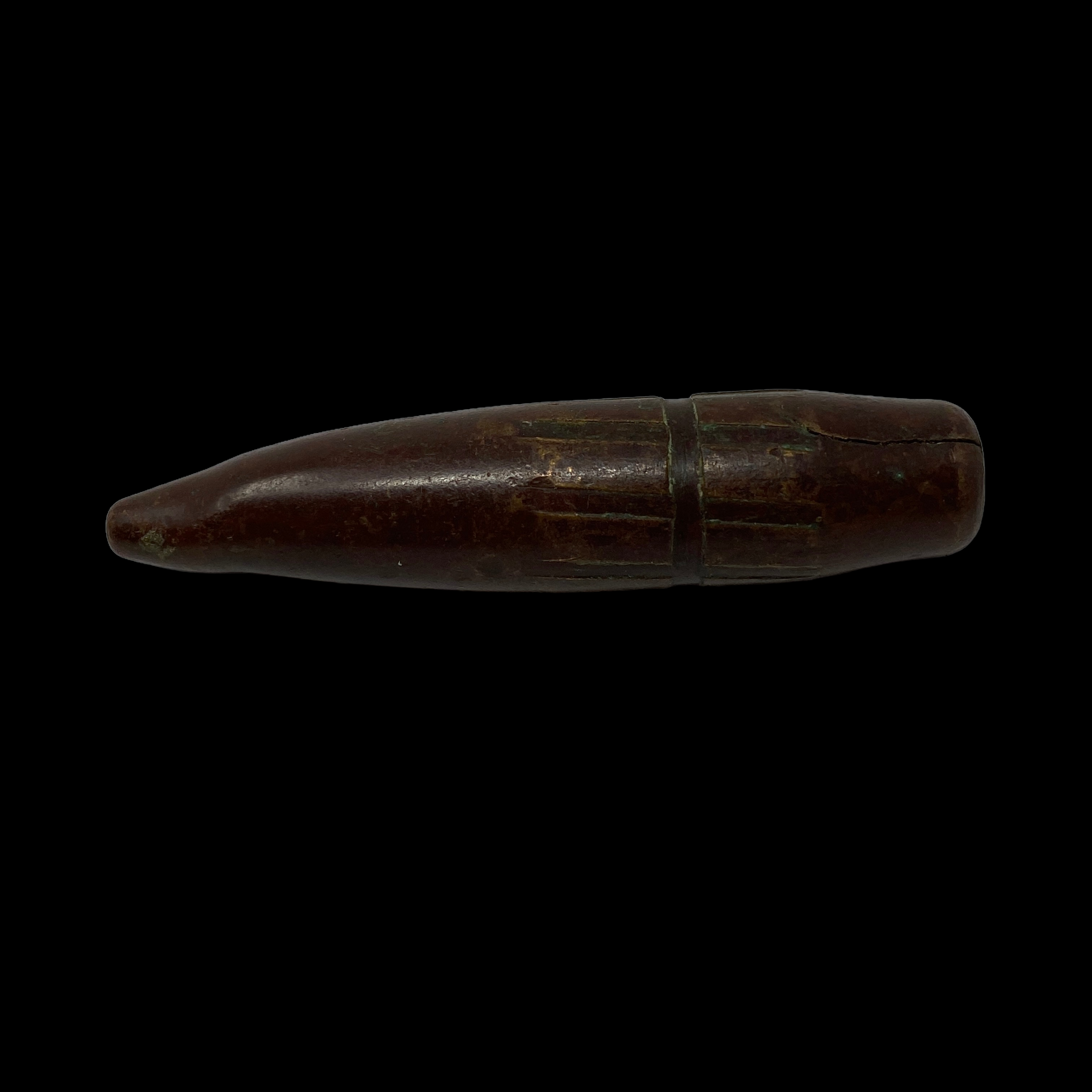
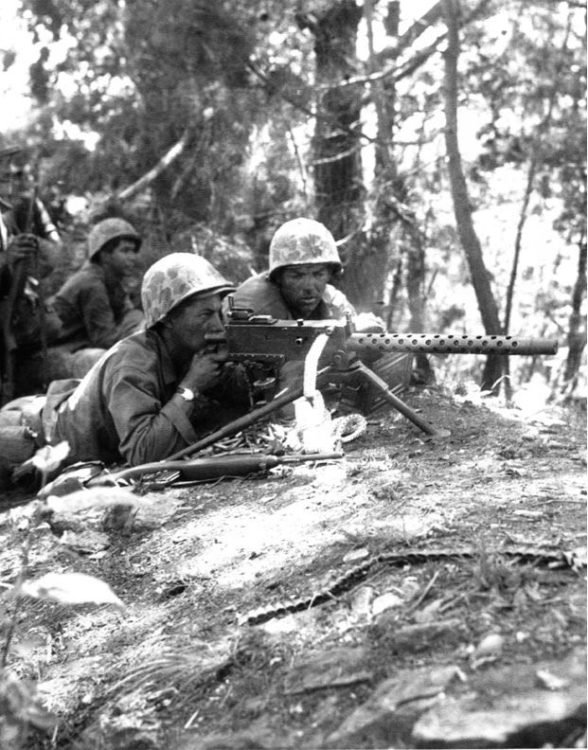

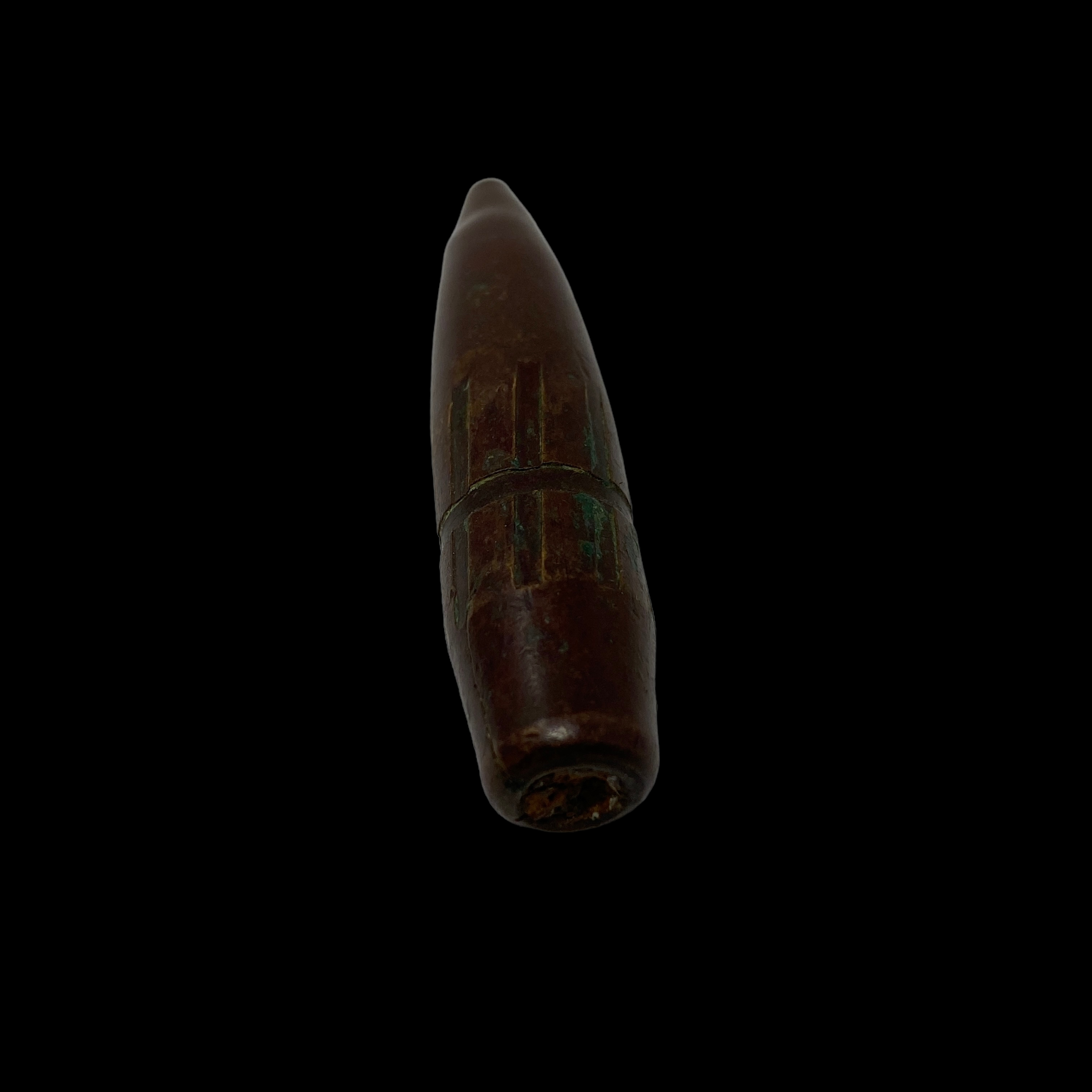
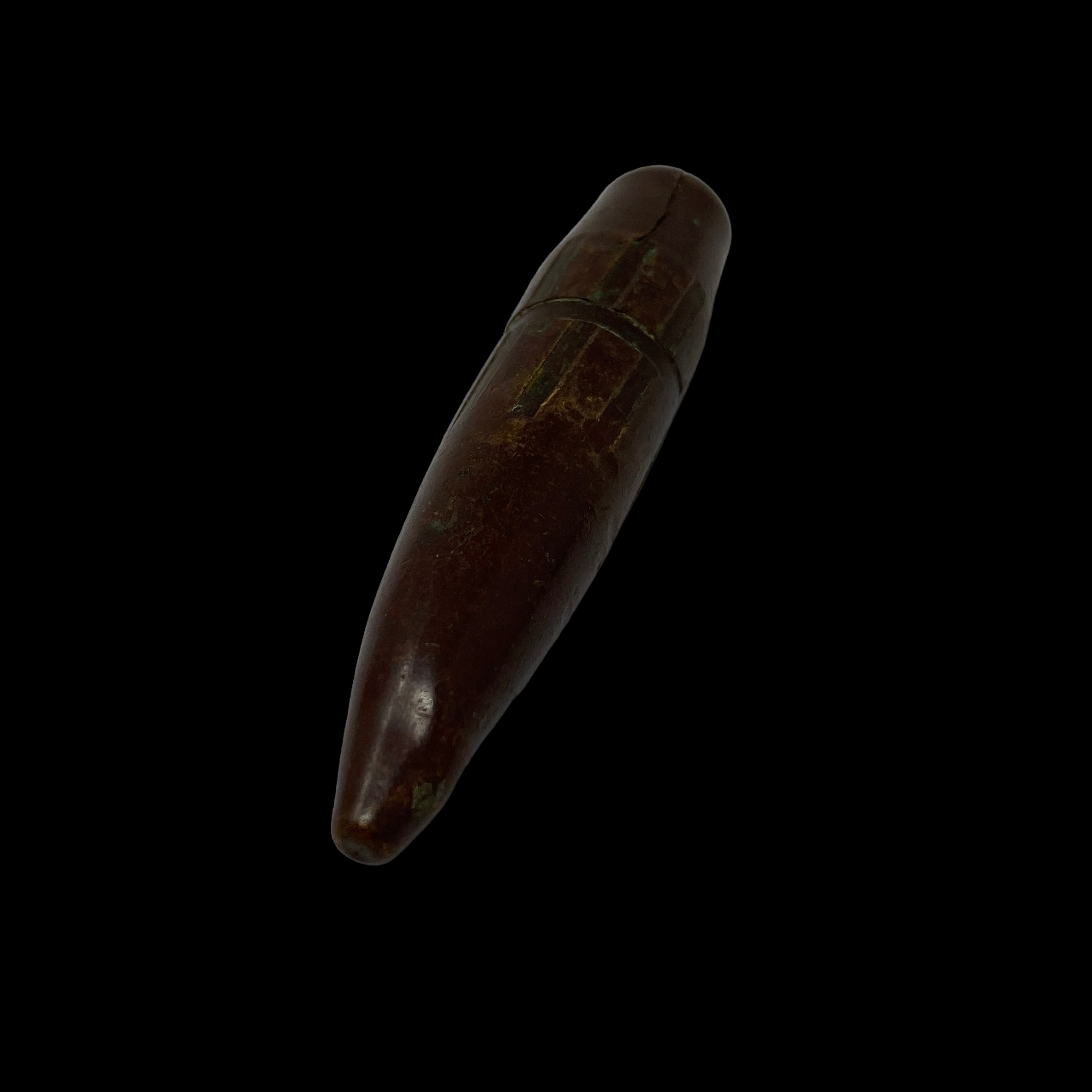


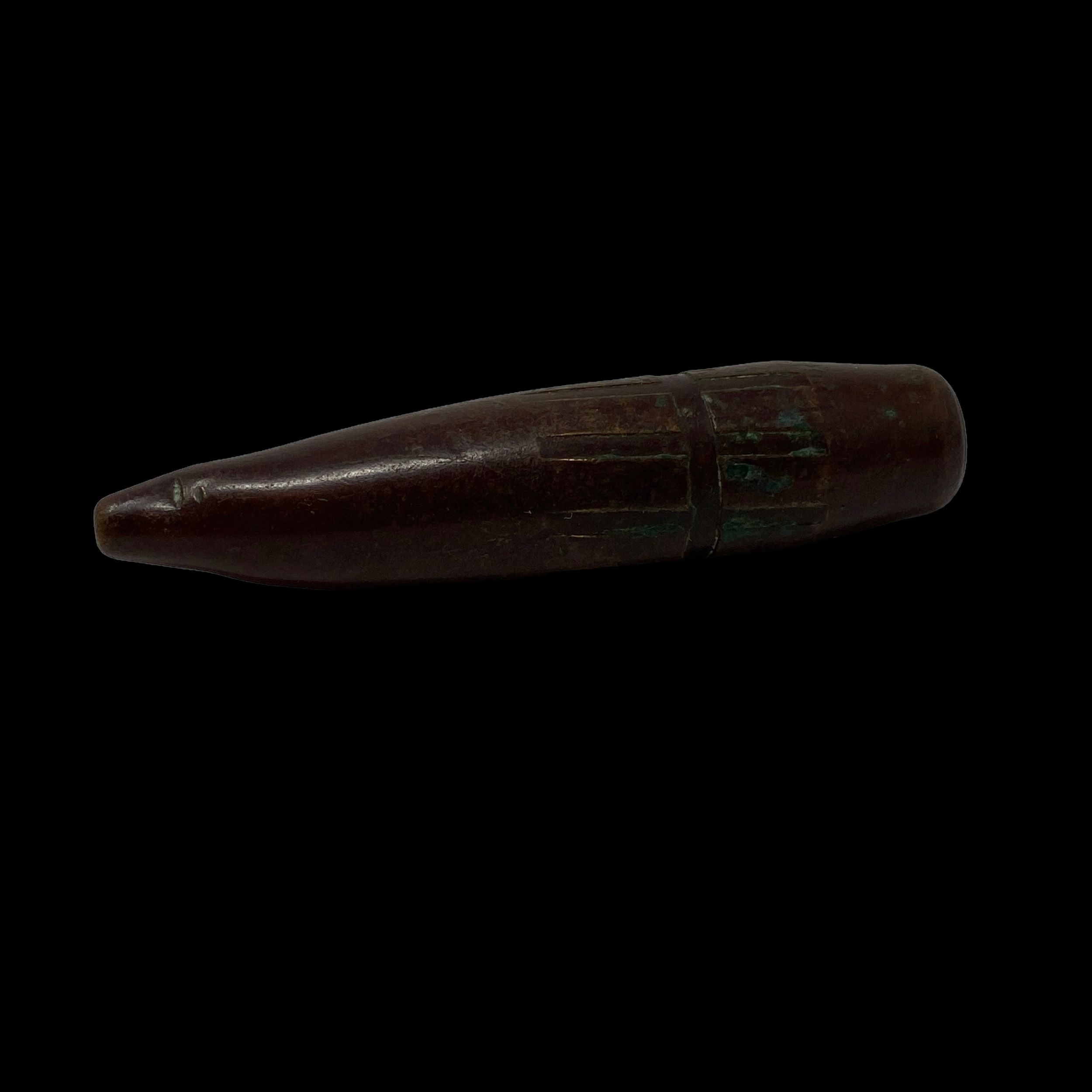

RARE! WWII "Shuri Ridge" Battle of Okinawa Battlefield Professionally Excavated U.S. M2 Browning Machine Gun Shot Bullet
Comes with C.O.A.
This incredibly rare and museum-grade World War II battlefield recovered shot .50 cal heavy machine gun bullet was professionally excavated from Shuri Ridge, Okinawa. Recovered from the Shuri Defense Line this U.S. machine bullet was shot at Japanese fortification and and defensive positions along General Ushijima’s triangle of defensive positions For being buried on the battlefield for decades, this shot .50 cal heavy machine gun bullet remains in remarkable “BEEN THROUGH HELL” condition. To think of this bullet being aimed and shot as Americans advanced on Shuri makes this an incredible humbling piece of history.
During the Battle of Okinawa, the .50 caliber machine gun played a critical role in the attacks on the Japanese defense line known as the Shuri Line. The .50 caliber machine gun, also known as the M2 Browning machine gun, was one of the most powerful weapons available to American soldiers during the Second World War. Its use during the battle was essential in breaking through the enemy's strongholds and securing the island for the Allied forces. In this essay, we will explore the history and technical specifications of the .50 caliber machine gun, as well as its importance in the Battle of Okinawa.
The .50 caliber machine gun was first designed in the early 20th century by John Browning, a prolific firearms designer. The gun was originally intended for use by aircraft, but its versatility soon became apparent, and it was adapted for use by ground troops as well. It quickly became a favorite of soldiers due to its immense firepower and range. The gun's ammunition, which consisted of armor-piercing bullets, was capable of penetrating armor and hard targets, making it an effective weapon against enemy fortifications.
The .50 caliber machine gun had a number of technical specifications that made it a valuable asset in the field. The gun weighed approximately 84 pounds and had a length of 65 inches. It was capable of firing up to 550 rounds per minute and had a range of up to 2,000 yards. The gun could be mounted on a tripod or a vehicle, making it a versatile weapon that could be used in a variety of situations.
During the Battle of Okinawa, the .50 caliber machine gun was used extensively by American troops to break through the Japanese defense line known as the Shuri Line. The Shuri Line was a network of fortifications and tunnels that ran across the southern part of Okinawa, and it was heavily defended by the Japanese army. The .50 caliber machine gun was instrumental in attacking these fortifications, as its armor-piercing bullets could penetrate the thick concrete and steel used in their construction. The gun's long range also allowed American troops to attack from a safe distance, minimizing their exposure to enemy fire.
The .50 caliber machine gun was also used to provide suppressive fire, which was critical in allowing American troops to advance. The gun's immense firepower and range allowed it to keep enemy soldiers pinned down, preventing them from returning fire and allowing American soldiers to maneuver into position. The suppressive fire provided by the .50 caliber machine gun was especially important during the final assault on the Shuri Line, which took place in late May 1945. During this assault, American troops faced heavy resistance from the Japanese army, and the .50 caliber machine gun was used extensively to keep the enemy at bay.
In addition to its use in attacking the Shuri Line, the .50 caliber machine gun was also used to provide air support during the Battle of Okinawa. The gun was mounted on aircraft, allowing them to attack enemy targets from the air. The gun's armor-piercing bullets were effective against enemy aircraft, and its long range allowed American planes to attack from a safe distance.
In conclusion, the .50 caliber machine gun was a critical weapon during the Battle of Okinawa. Its immense firepower, range, and versatility made it an invaluable asset for American troops, allowing them to break through the Japanese defense line and secure the island. The gun's use during the battle demonstrated the importance of having powerful and effective weapons on the battlefield, and its legacy continues to this day as the .50 caliber machine gun remains a standard weapon in many armies around the world.
Shuri Ridge:
Shuri Ridge was a critical terrain feature located on the island of Okinawa, Japan, during the Second World War. The Battle of Okinawa was fought from April to June of 1945 between Allied forces, primarily consisting of American and Japanese troops. The Shuri Ridge played a pivotal role in the outcome of this battle, which was one of the most significant and bloodiest confrontations in the Pacific Theater of the war.
The Shuri Ridge was strategically important because it provided a natural barrier that protected the city of Shuri, which was the capital of the Okinawa Prefecture. The ridge was made up of steep hills and deep ravines, covered in dense jungle foliage. The Japanese military recognized the importance of the ridge and fortified the area with an intricate network of bunkers, tunnels, and underground caves. The fortified complex was named the Shuri Castle, and it served as the headquarters for the Japanese army during the battle.
The American military recognized the strategic importance of the Shuri Ridge and made several attempts to capture it. The first major assault on the ridge began on April 19, 1945, and continued for several weeks. The fighting was intense, with both sides suffering heavy casualties. The Japanese army had a significant advantage in their ability to move and fight from underground bunkers and tunnels, which provided them with excellent cover and protection.
The American military used a combination of air power, artillery, and infantry assaults to try and dislodge the Japanese army from the Shuri Ridge. They also employed tactics such as flamethrowers and grenades to try and destroy the fortified bunkers and caves. However, progress was slow, and the fighting was some of the fiercest and most brutal of the entire war.
After several weeks of intense fighting, the American military was finally able to capture the Shuri Castle complex on May 29, 1945. The capture of the Shuri Ridge was a significant turning point in the Battle of Okinawa. It enabled the American military to push further inland and eventually capture the city of Shuri on June 22, 1945.
The Battle of Okinawa was a brutal and costly confrontation, with over 240,000 people losing their lives, including civilians. The capture of the Shuri Ridge played a pivotal role in the eventual outcome of the battle. It was a significant military achievement for the American military, and it enabled them to push further inland and ultimately bring the battle to a successful conclusion.
In conclusion, the Shuri Ridge was a critical terrain feature during the Battle of Okinawa, and its capture was a significant turning point in the conflict. The complex network of bunkers and tunnels created a formidable defensive position for the Japanese army, which was only overcome after several weeks of intense fighting. The capture of the ridge was a significant achievement for the American military and paved the way for the eventual capture of the city of Shuri. The Battle of Okinawa was one of the most brutal and costly battles of the Second World War, and the Shuri Ridge played a pivotal role in its outcome.